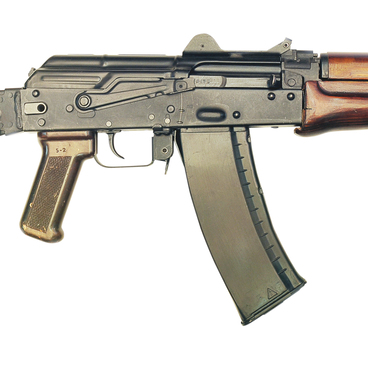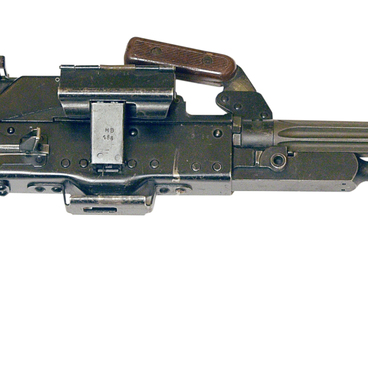In 1973, the Ministry of Defense Industry of the USSR and the Main Missile and Artillery Directorate announced a competition to create a new light machine gun for motorized infantry, airborne troops, crews of combat vehicles, tanks, and aircraft. It was necessary to make a compact weapon for a new cartridge of 5.45 mm caliber.
The design bureau of Mikhail Kalashnikov began to develop a small-arms system based on the AKS-74, which included a new Kalashnikov light machine gun. The leading designer of the project was Semyon Furman.
The Kalashnikov RPK-74 light machine gun had almost the same structure as its predecessor, the RPK. The bolt carrier group of the new machine gun was unified with the corresponding parts from the AK-74. Due to the new cartridge, the bolt carrier group was changed. There was a cutout on the left side of the bolt frame, designed to facilitate the structure. The bolt was reduced and lightened, and the annular recess was removed from the cartridge case seat. Moreover, designers changed the shape of the bolt’s socket for ejecting the cartridge.
The new machine gun was equipped with a muzzle brake, a device that reduced the tossing of the barrel when firing and improved the accuracy of fire. The muzzle brake used the kinetic energy of the powder gases escaping from the barrel after the bullet was fired.
The principle of automatics operation remained the same: under the action of powder gases, the piston, rigidly connected to the bolt frame, activated the bolt group, after which the spent cartridge case was ejected. Under the action of the return spring, the bolt moved to the extreme forward position and, turning, locked the barrel. For locking, two lugs and grooves in the receiver insert were used.
The Soviet Army put the Kalashnikov RPK-74 light machine gun into service as a part of a unified small arms system with a 5.45 mm cartridge in January 1974. It was equipped with a box magazine for 45 rounds. A soldier could also equip the PKK-74 with a 30-round magazine from the AK-74. A four-row magazine for 60 rounds and a drum one for 75 were also an option.
The design bureau of Mikhail Kalashnikov began to develop a small-arms system based on the AKS-74, which included a new Kalashnikov light machine gun. The leading designer of the project was Semyon Furman.
The Kalashnikov RPK-74 light machine gun had almost the same structure as its predecessor, the RPK. The bolt carrier group of the new machine gun was unified with the corresponding parts from the AK-74. Due to the new cartridge, the bolt carrier group was changed. There was a cutout on the left side of the bolt frame, designed to facilitate the structure. The bolt was reduced and lightened, and the annular recess was removed from the cartridge case seat. Moreover, designers changed the shape of the bolt’s socket for ejecting the cartridge.
The new machine gun was equipped with a muzzle brake, a device that reduced the tossing of the barrel when firing and improved the accuracy of fire. The muzzle brake used the kinetic energy of the powder gases escaping from the barrel after the bullet was fired.
The principle of automatics operation remained the same: under the action of powder gases, the piston, rigidly connected to the bolt frame, activated the bolt group, after which the spent cartridge case was ejected. Under the action of the return spring, the bolt moved to the extreme forward position and, turning, locked the barrel. For locking, two lugs and grooves in the receiver insert were used.
The Soviet Army put the Kalashnikov RPK-74 light machine gun into service as a part of a unified small arms system with a 5.45 mm cartridge in January 1974. It was equipped with a box magazine for 45 rounds. A soldier could also equip the PKK-74 with a 30-round magazine from the AK-74. A four-row magazine for 60 rounds and a drum one for 75 were also an option.

